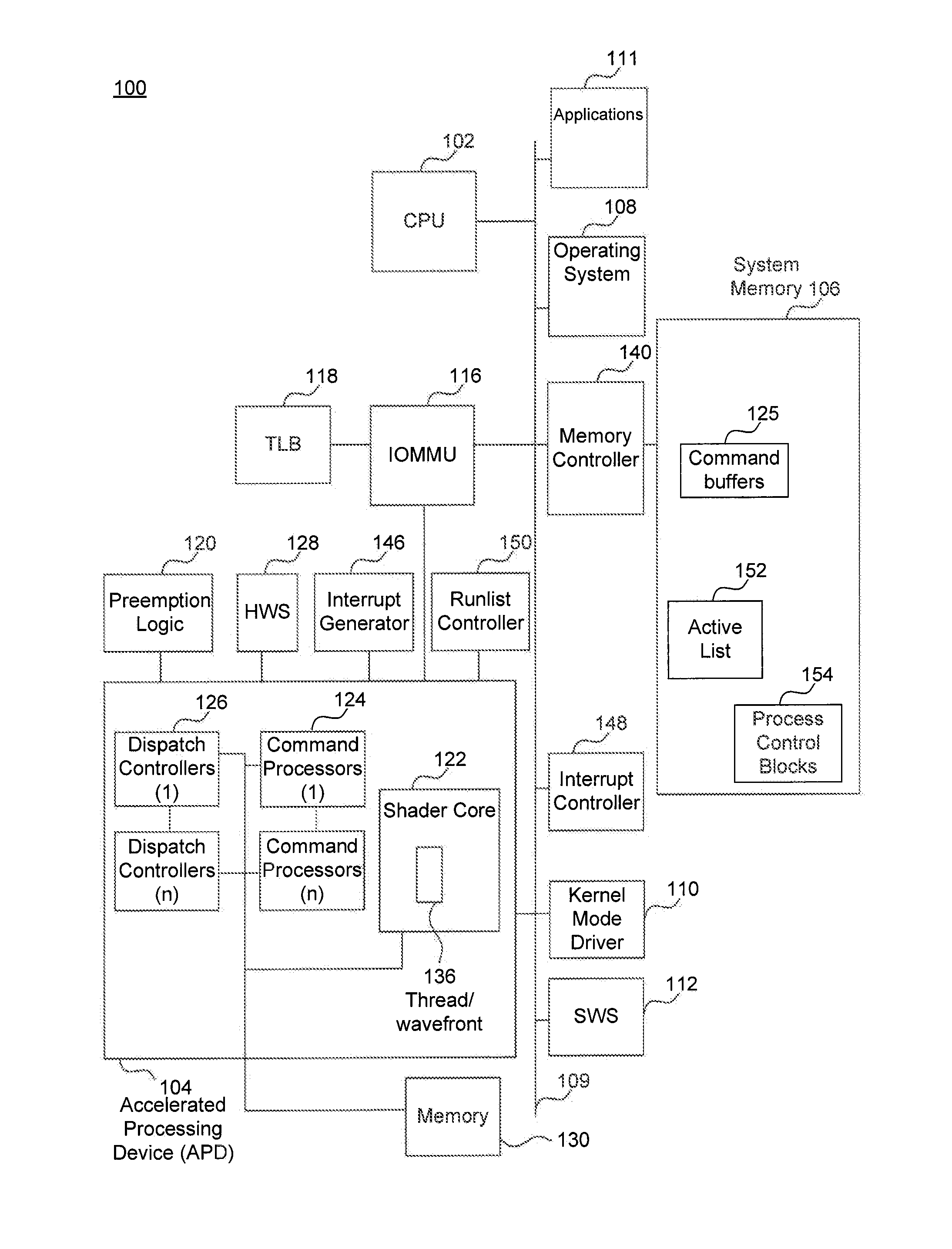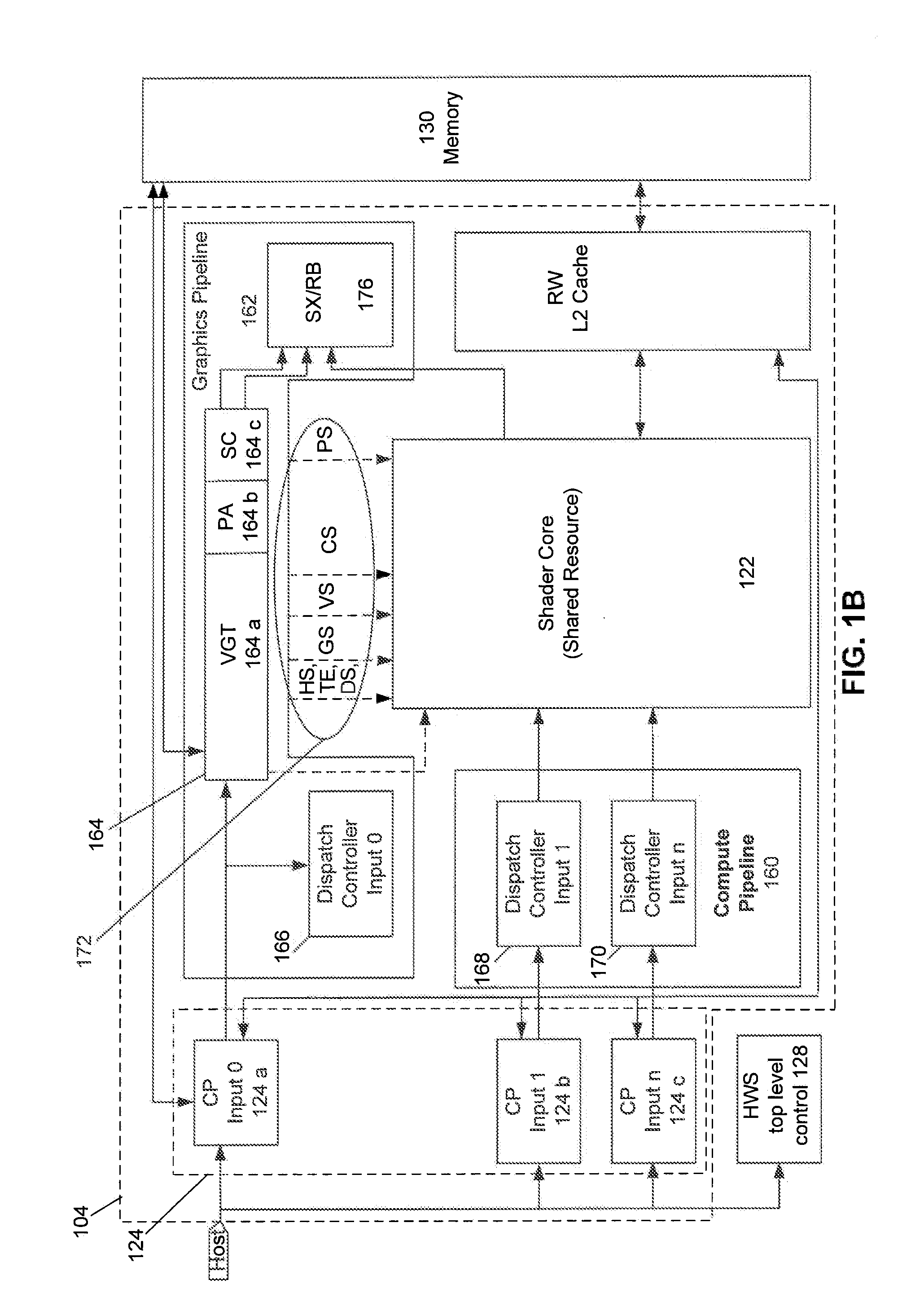Device Discovery and Topology Reporting in a Combined CPU/GPU Architecture System
- Summary
- Abstract
- Description
- Claims
- Application Information
AI Technical Summary
Benefits of technology
Problems solved by technology
Method used
Image
Examples
Embodiment Construction
[0015]What is needed are improved methods and apparatus for discovering and reporting properties of devices and system topology that are relevant to efficiently scheduling and distributing computational tasks to the various computational resources of a system implementing a combined CPU / GPU architecture.
[0016]Although GPUs, accelerated processing units (APUs), and general purpose use of the graphics processing unit (GPGPU) are commonly used terms in this field, the expression “accelerated processing device (APD)” is considered to be a broader expression. For example, APD refers to any cooperating collection of hardware and / or software that performs those functions and computations associated with accelerating graphics processing tasks, data parallel tasks, or nested data parallel tasks in an accelerated manner compared to conventional CPUs, conventional GPUs, software and / or combinations thereof.
[0017]Methods and apparatus are provided, as an aspect of a combined CPU / APD architectur...
PUM
 Login to View More
Login to View More Abstract
Description
Claims
Application Information
 Login to View More
Login to View More - R&D
- Intellectual Property
- Life Sciences
- Materials
- Tech Scout
- Unparalleled Data Quality
- Higher Quality Content
- 60% Fewer Hallucinations
Browse by: Latest US Patents, China's latest patents, Technical Efficacy Thesaurus, Application Domain, Technology Topic, Popular Technical Reports.
© 2025 PatSnap. All rights reserved.Legal|Privacy policy|Modern Slavery Act Transparency Statement|Sitemap|About US| Contact US: help@patsnap.com



